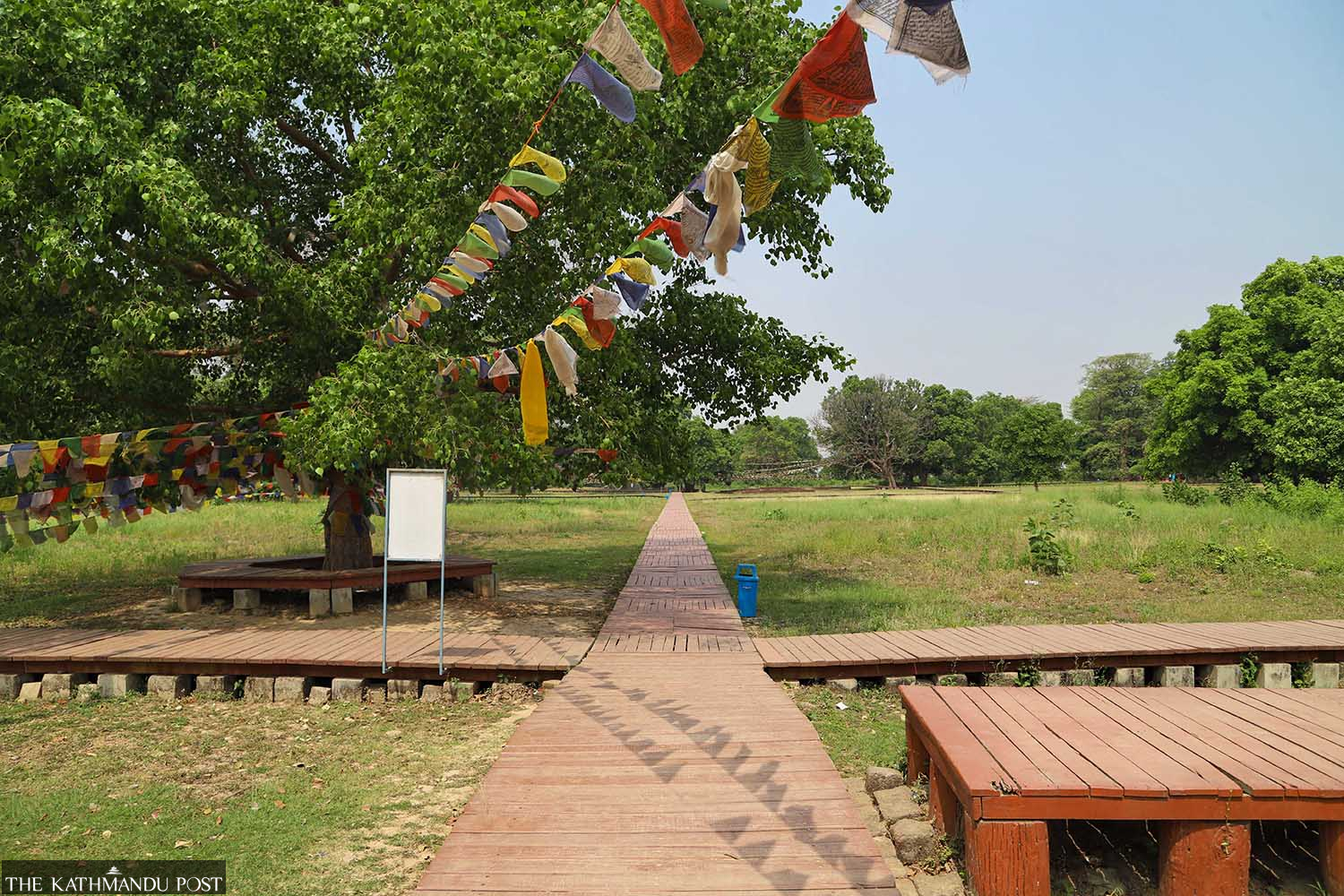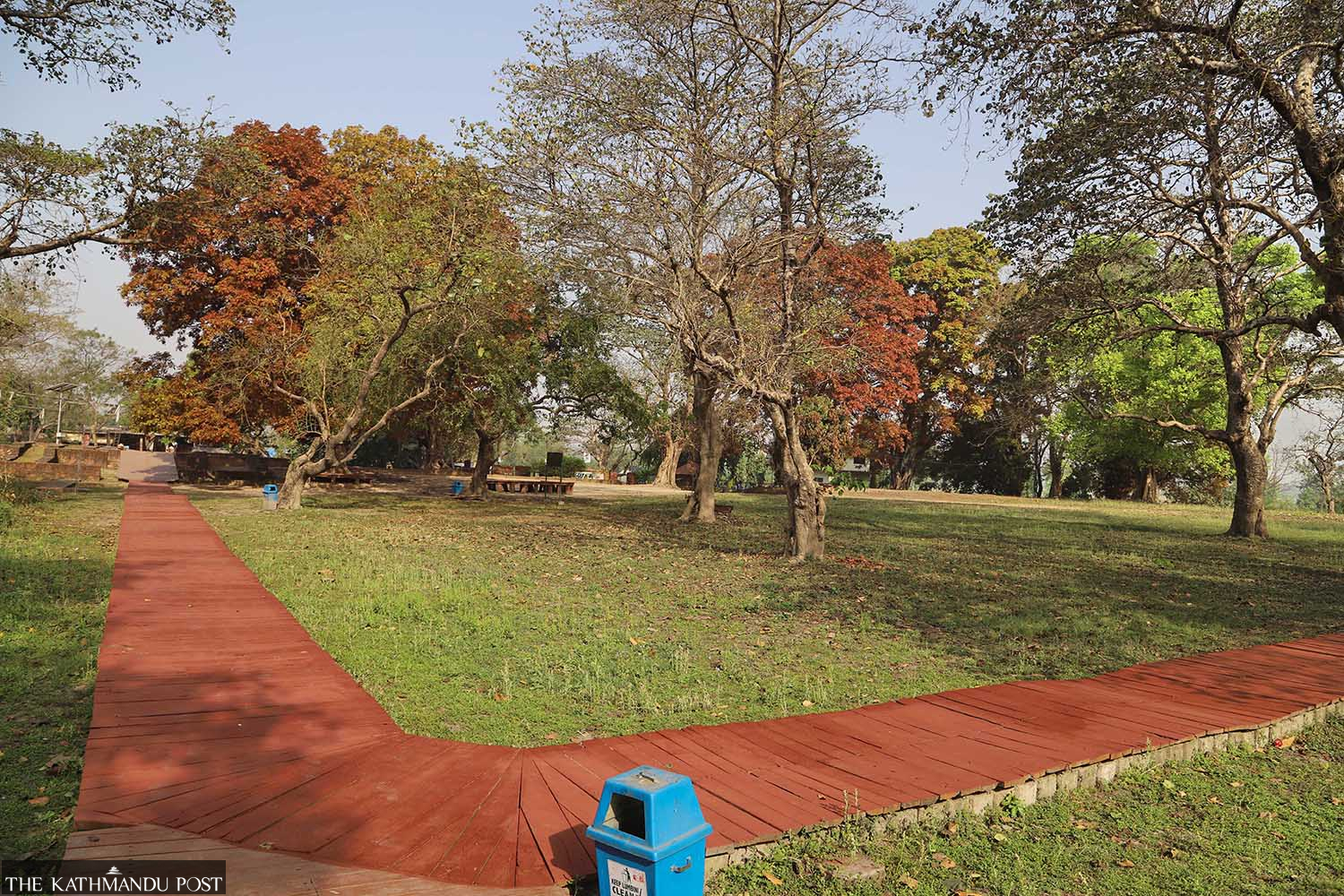Lumbini Province
Tilaurakot gets a facelift amid efforts to put it on UNESCO World Heritage Sites list
In a bid to beautify the revered Buddhist pilgrimage site, authorities have focussed on building support infrastructures inside the ancient site.
Manoj Paudel
Tilaurakot, an ancient Shakya capital city where Siddhartha Gautam spent his princely life before he became the Buddha, has got a facelift.
The historic place was left unattended and neglected until a few years back. In a bid to beautify the revered pilgrimage site, the authorities have focussed on building support infrastructures inside the ancient site.
A two-kilometre wooden walkway that winds through the open space inside the Tilaurakot premises has been constructed for visitors to get a better view of the ruins of Tilaurakot.
“Tilaurakot area was in a sorry state, littered with papers and plastics,” said Keshav Bhattarai of Kathmandu, comparing his fresh visit with his Tilaurakot visit four years ago. “I am very happy to see clean and beautiful Tilaurakot now.”

The Lumbini Development Trust said it plans to make Tilaurakot visitor-friendly without harming its historical and archaeological significance.
A six-feet wide wooden walkway, constructed last year at the cost of around Rs 40 million, has helped visitors reach almost all the historically and archaeologically important places in the area. The trail, which winds from the western gateway to the eastern gateway, was constructed on top of a 40 cm tall cemented block based on the design prepared by Ukio Nisimura of Tokyo University who was involved in the excavation of Tilaurakot.
“The walkway was constructed in line with the archaeological norms and values of Tilaurakot,” Gyanin Rai, senior administrative officer at the Lumbini Development Trust, said, adding the trail was with permission from the Department of Archeology.
Ram Bahadur Kunwar, chief archaeological officer at the Department of Archeology, said development activities should be conducted cautiously in archaeologically important places. “We conducted a heritage impact assessment to construct the walkway in Tilaurakot,” he said.
The Department of Archaeology and Lumbini Development Trust started excavating and exploring Tilaurakot and its surrounding areas in 2012. A geophysical survey of the Tilaurakot premises conducted in 2014 showed a 30m long, 30m wide structure in the sunken land and a wall around it. The geophysical survey revealed an empty space in the middle which is believed to be a pond. Ruins of a wall built during the Mauryan empire were recovered during an excavation last month. Maurya era bricks measuring 47 cm long, 26 to 28 cm wide and 7 cm thick were used to build the wall.
The authorities concerned have also improved the sanitation of the Tilaurakot area. The bushes have been cleared in around 10 bighas of land. Two gardeners have been appointed to maintain the garden and mow grasses in the area. Prayer flags installed by devotees have also been well managed.
Five resting places have been built for those wishing to meditate. The historic walls, Samayamai temple and other structures have been renovated and preserved. The historically important structures and other findings recovered during the recent excavations are preserved in such a way that the visitors can easily observe them.
“The significance of Tilaurakot has increased as visitors can easily see the structures that were recovered by the recent excavation and research,” said Madhav Acharya, chief of the Tilaurakot liaison office of the Lumbini Development Trust. “It helps to highlight Tilaurakot as an archaeologically and historically important venue.”
Security has also been heightened in the Tilaurakot area, with the trust mobilising 11 security guards to maintain security.

The government had handed over the responsibility to preserve and develop Tilaurakot and other six places related to Buddha to the Lumbini Development Trust 38 years ago.
Since the trust started developing Tilaurakot and its vicinity, locals are excited about the area’s prospect as a major tourist destination.
“People are hopeful of development as Tilaurakot, which was neglected for years, has been well preserved now,” said Ram Kumar Yadav, a local tourist guide.
Meanwhile, the government has initiated fresh efforts to enlist Tilaurakot in UNESCO's list of World Heritage Sites.
According to Sanuraja Shakya, member secretary of Lumbini Development Trust, the Department of Archaeology and the Lumbini Development Trust have already submitted a preliminary report to UNESCO urging to include Tilaurakot in the world heritage site. He said the final report would be submitted in January 2023.
“Tilaurakot is not only Nepal’s asset,” said Abadhesh Kumar Tripathi, vice-chairman of Lumbini Development Trust. “It is important to the entire South Asia.”




 26.21°C Kathmandu
26.21°C Kathmandu

















